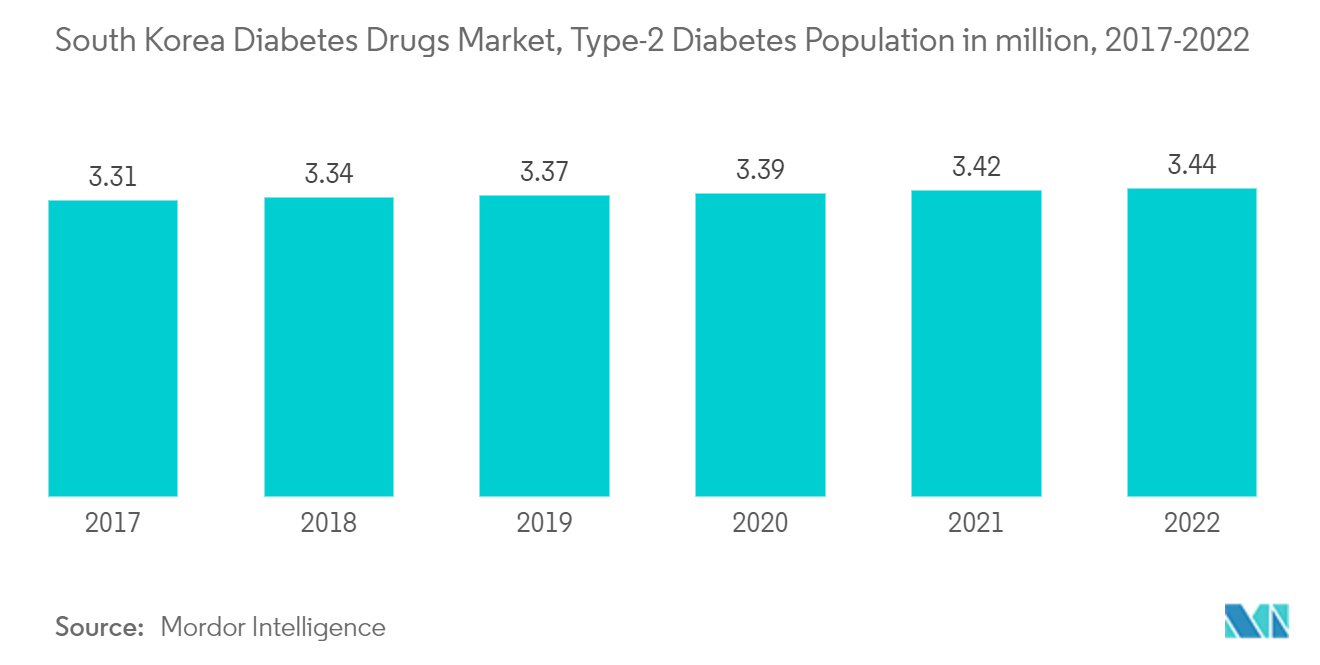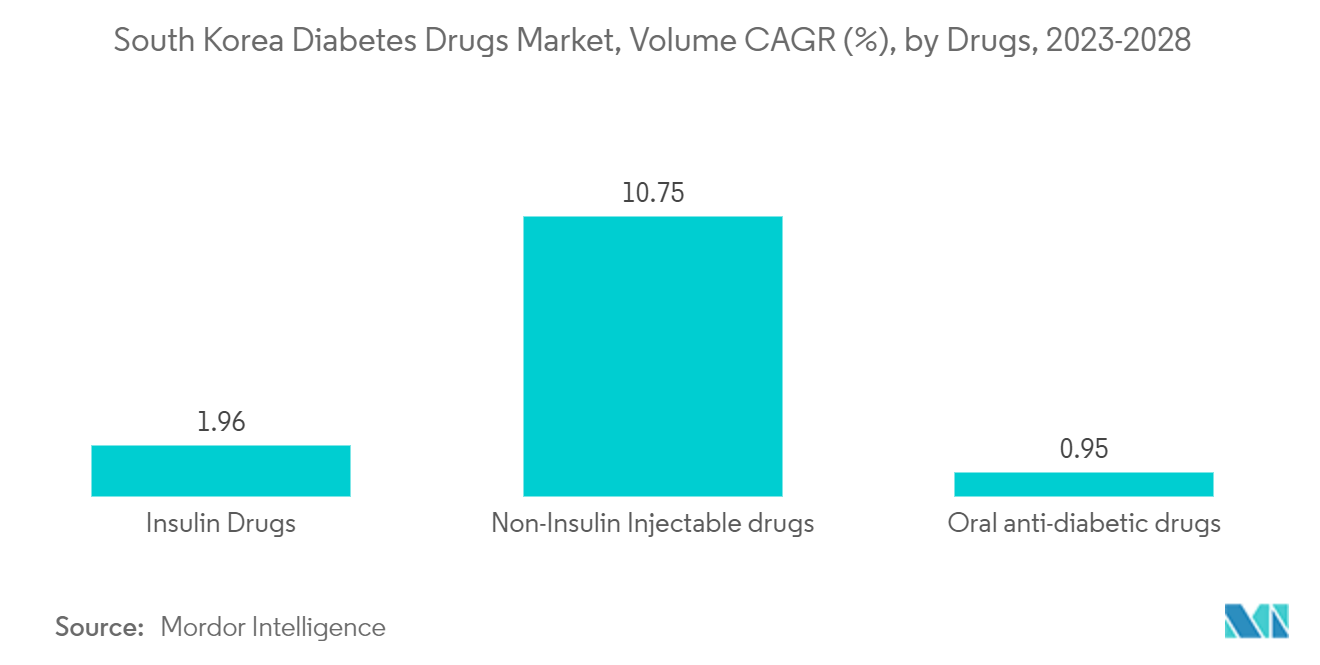Market Trends of South Korea Diabetes Drugs Industry
The oral anti-diabetic drugs segment holds the highest market share in the South Korea Diabetes Drugs Market in the current year
The oral anti-diabetic drugs segment holds the highest market share of about 55.2% in the South Korea Diabetes Drugs Market in the current year.
Oral Anti-Diabetic Drugs are available internationally and are recommended for use when escalation of treatment for type 2 diabetes is required along with lifestyle management. Oral agents are typically the first medications used in treating type 2 diabetes due to their wide range of efficacy, safety, and mechanisms of action. Anti-diabetic drugs help diabetes patients control their condition and lower the risk of diabetes complications. People with diabetes may need to take anti-diabetic drugs for their whole lives to control their blood glucose levels and avoid hypoglycemia and hyperglycemia. Oral anti-diabetic agents present the advantages of easier management and lower cost. So they became an attractive alternative to insulin with better acceptance, which enhances adherence to the treatment.
Diabetes is a significant health problem and one of the tremendous challenges for healthcare systems all over South Korea. The prevalence of known type 1 & 2 diabetes in the South Korean adult population is very high, along with many patients not yet diagnosed with the disease. Due to an aging population and unhealthy lifestyle, the prevalence of type 2 diabetes is expected to increase steadily over the next few years. High-quality care, including adequate monitoring, control of risk factors, and active self-management, are the key factors for preventing complications in South Korean patients with type 2 diabetes.
Awareness of diabetes and glycemic control requires significant improvements in South Korea. The new national-level action plan is required to raise awareness about diabetes and prediabetes, improve glycemic control and minimize the occurrence of adverse health outcomes. With growing awareness, the adoption of anti-diabetic drugs is expected to improve.
Therefore, owing to the above factors, the studied market is anticipated to grow over the analysis period.

Glucagon-like peptide-1 receptor agonist Segment is expected to witness a healthy CAGR in the South Korea Diabetes Drugs Market over the forecast period
Glucagon-like peptide -1 receptor agonist drugs are expected to register a CAGR of around 7.2% over the forecast period.
Glucagon-like peptide-1 receptor agonists (GLP-1RAs) are a class of medications used for treating type 2 diabetes, and some drugs are also approved for obesity. One of the benefits of this class of drugs over older insulin secretagogues, such as sulfonylureas or meglitinides, is that they contain a lower risk of causing hypoglycemia. Besides being important glucose-lowering agents, GLP-1RAs include significant anti-inflammatory and pulmonary protective effects and benefit gut microbes' composition.
The high prevalence of type 2 diabetes is associated with a significant economic burden. The costs of diabetes are increased in patients with co-morbidities such as hypertension and hyperlipidemia and in patients who develop complications. Costs increase with an increasing number of complications. The National Health Insurance (NHI) Act covers all public health insurance in Korea. This Act covers the entire population, and all citizens earning an income in Korea must contribute a percentage of their monthly salary.
Employers are also responsible for matching employee contributions. Two health insurance agencies are under the MOHW: the Health Insurance Review Agency (HIRA) and the National Health Insurance Corporation (NHIC). In particular, the HIRA is responsible for reviewing reimbursement coverage/non-coverage and pricing applications from pharmaceutical and medical device companies. The company may expand its market and obtain a larger sales volume if reimbursement is obtained, enhancing market prospects in the coming years.


